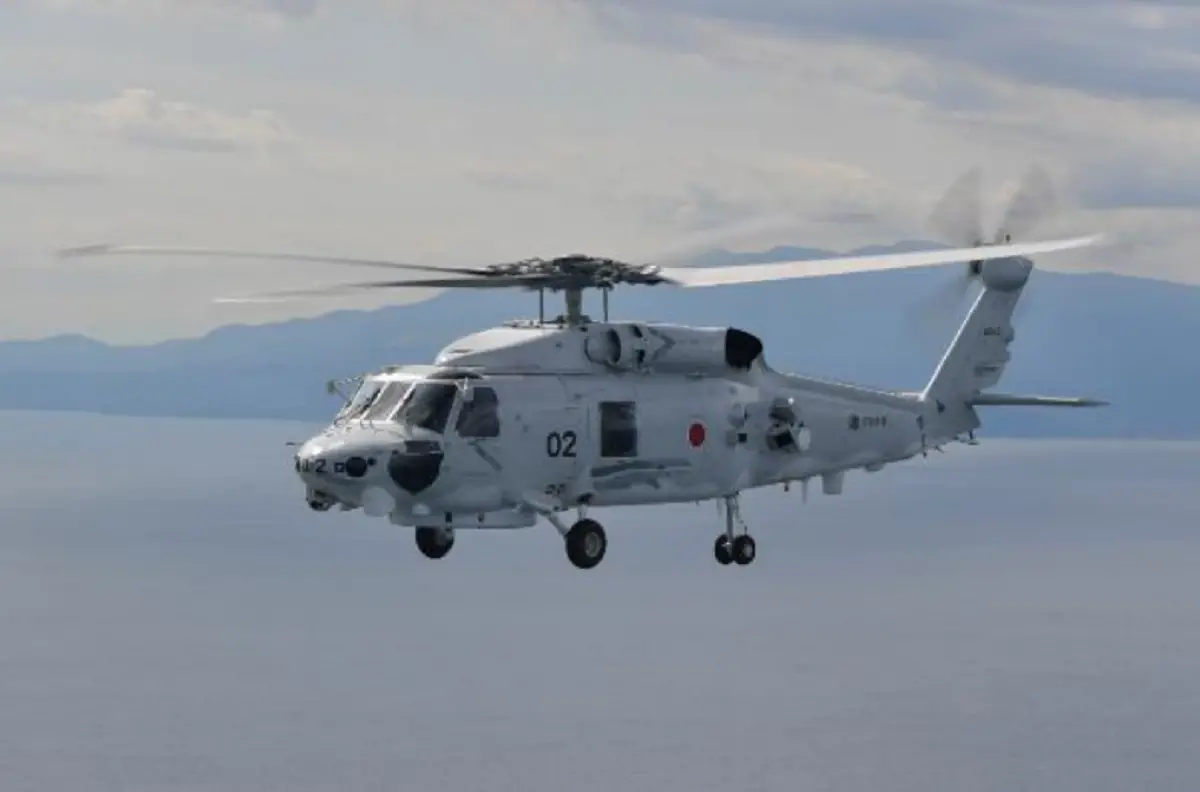Japan has announced the successful culmination of its Mitsubishi Heavy Industries (MHI) (Sikorsky) SH-60L maritime helicopter project. Crafted to be a formidable force in anti-surface warfare (ASuW) and anti-submarine warfare (ASW), the SH-60L helicopter boasts a suite of enhancements, including an upgraded engine transmission, an ultra-high-speed datalink, and refined ASW systems. On December 22, Janes reported that Japan’s Acquisition, Technology & Logistics Agency (ATLA) confirmed the completion of the SH-60L’s development, marking a pivotal moment in Japan’s defense capabilities. This innovative helicopter’s journey traces back to its developmental genesis in 2015, fueled by a USD 63 million ATLA contract.

The imperative to create a replacement for Japan Maritime Self-Defense Force’s (JMSDF’s) aging SH-60K helicopters was set in motion in Japan fiscal year (FY) 2007. Originally slated for serial production in 2022, the SH-60L garnered significant attention. The Ministry of Defense (MoD) sought a budget allocation of JPY 60.3 billion (USD 423.1 million) in 2023 to acquire six SH-60Ls, earmarked, in all likelihood, for deployment on the JMSDF’s state-of-the-art Mogami-class frigates. The JMSDF presently operates two Mogami-class frigates, with plans underway to construct 10 more ships under its Mid-Term Defense Program for FY2019–23. The timeline for phasing out the earlier SH-60Ks with the new SH-60Ls, however, remains unspecified.

The Mitsubishi H-60 series, a twin-turboshaft engine helicopter rooted in the Sikorsky S-70 helicopter family, stands as a pivotal asset for the Japan Self-Defense Forces (JSDF). Originating as the successor to the Mitsubishi HSS-2B Sea King, the SH-X (later SH-60J) project’s inception aligned with the commissioning of the HSS-2B. Initially conceived to integrate the HSS-2B’s mission system with the bare SH-60B aircraft, the project pivoted to incorporate a system freshly developed by the TRDI. Notably, the SH-60J/K/L models cater to anti-submarine patrol roles for the JMSDF, while the UH-60J serves as a search and rescue variant for the Japan Air Self-Defense Force (JASDF) and JMSDF. Additionally, the UH-60JA operates as a utility version for the Japan Ground Self-Defense Force (JGSDF).

Manufactured under license from Sikorsky, the SH-60J’s production commenced in August 1991, boasting advancements like the HQS-103 Dipping Sonar, HPS-104 active electronically scanned array Search Radar, and HLR-108 ESM System in its avionics suite, distinguishing it from the SH-60B. Featuring the GE/IHI T700-IHI-701C turboshaft engine, produced under General Electric’s license by Ishikawajima-Harima Heavy Industries, this hybrid helicopter amalgamates SH-60B and SH-60F traits, barring avionics. With over 100 SH-60Js produced by 2007, its crew configuration comprises a pilot, copilot, and sensor operator, leveraging cutting-edge technology like the Automatic Flight Management System and Inertial Navigation system to enhance tactical coordination.
















